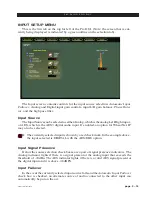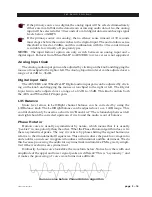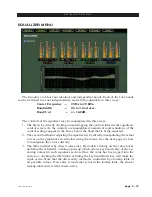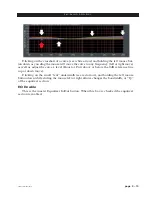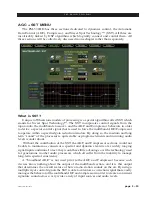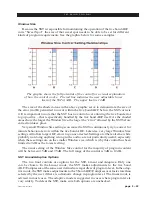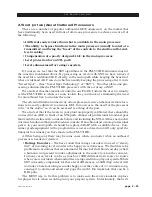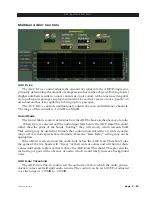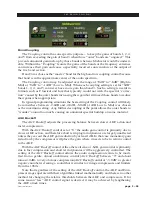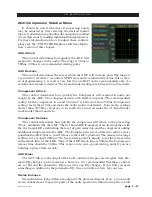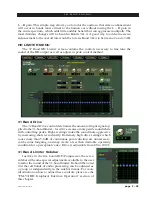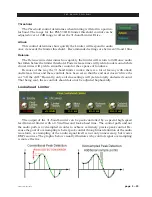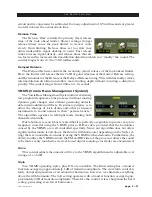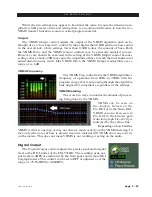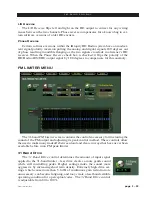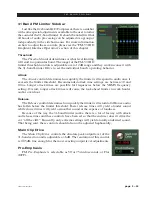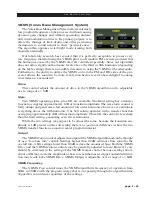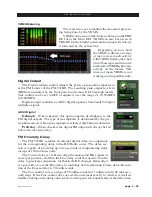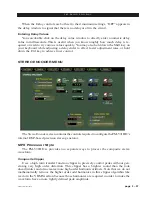
page 3 – 23
FM-531HD / May 2013
F M - 5 3 1 H D P R O G U I
A Word (or two) About Outboard Processors
There are a number of popular outboard AGC/Compressors on the market that
have traditionally been used in front of all‑in‑one processors to achieve one or all of
the following:
• A different sonic texture than what is available in the main processor.
• The ability to bypass functions in the main processor (usually located at a
transmitter) and bring the “meat” of the controls to the studio end for end
-
less tweaking
• Compensation of a poorly designed AGC in the main processor.
• Level protection for an STL path
• Level enhancement for ratings encoders.
Of course, we feel that the SST algorithms in the FM‑531HD eliminate most of
the concerns mentioned above. By processing as we do with SST, we have removed
the need for a wideband AGC directly in the audio path while keeping the benefit of
what a wideband AGC can do (which is usually keeping the processing after it in its
“Sweet Spot”... thus “Sweet Spot Technology” or “SST”). No other all‑in‑one pro‑
cessing solution like the FM‑531HD processes with the accuracy of SST.
We also feel that the amount of control in our Pro GUI allows the user to virtually
set the FM‑531HD to whatever sonic texture they can think of, eliminating the need
for an outboard box to emulate the same.
The advent of internet connectivity allows processors in even the most remote loca‑
tions to be easily adjusted via a remote GUI. In most cases, the need for the processor
to be “at the studio” so it can be accessed is a thing of the past.
We also feel that if the levels in your plant are properly calibrated, there should be
no need for an AGC in front of an STL path. Almost all professional broadcast gear
that would be in‑line with a console before and including the STL will have as much if
not more headroom than your broadcast console. If non‑broadcast or non‑professional
gear is in your audio path, it should be replaced ASAP with a suitable device. Con‑
sumer grade equipment in the program line is never advised and will only spoil the
financial investment you have made in the FM‑531HD.
All this being said, there may be some cases where, no matter what, an outboard
processor is needed or desired.
•
Ratings Encoders – We have found that ratings encoders do need a “steady
diet” of incoming level in order to be happy in certain cases. We find this to be
problematic at stations that are automated for much of their broadcast day (where
a human is not present to make adjustments to the source level on the console).
In many cases, levels can be as much as 10dB different from source to source
when care is not taken when audio files are ingested into a playout system. While
SST can easily compensate for these level differences, a 10dB drop in level will
not make a barefoot ratings encoder happy over the course of a 3‑4 minute song,
causing it to alarm and email and page the world. On weekends, that can be a
BIG pain.
The BEST way to fix this problem is to make sure there are standards in place
for proper levels when recording into your playout system. Unfortunately, that isn’t
Summary of Contents for FM-531 HD
Page 2: ...Technical Manual Wheatstone Corporation May 2013 FM HD Digital Audio Processor FM 531hd...
Page 122: ...page A 2 FM 531HD May 2013 A P P E N D I C E S Appendix A General Specifications A 3 Contents...
Page 128: ...page A 8 FM 531HD May 2013 A P P E N D I C E S Appendix B FM 531HD GPI Interface A 9 Contents...







